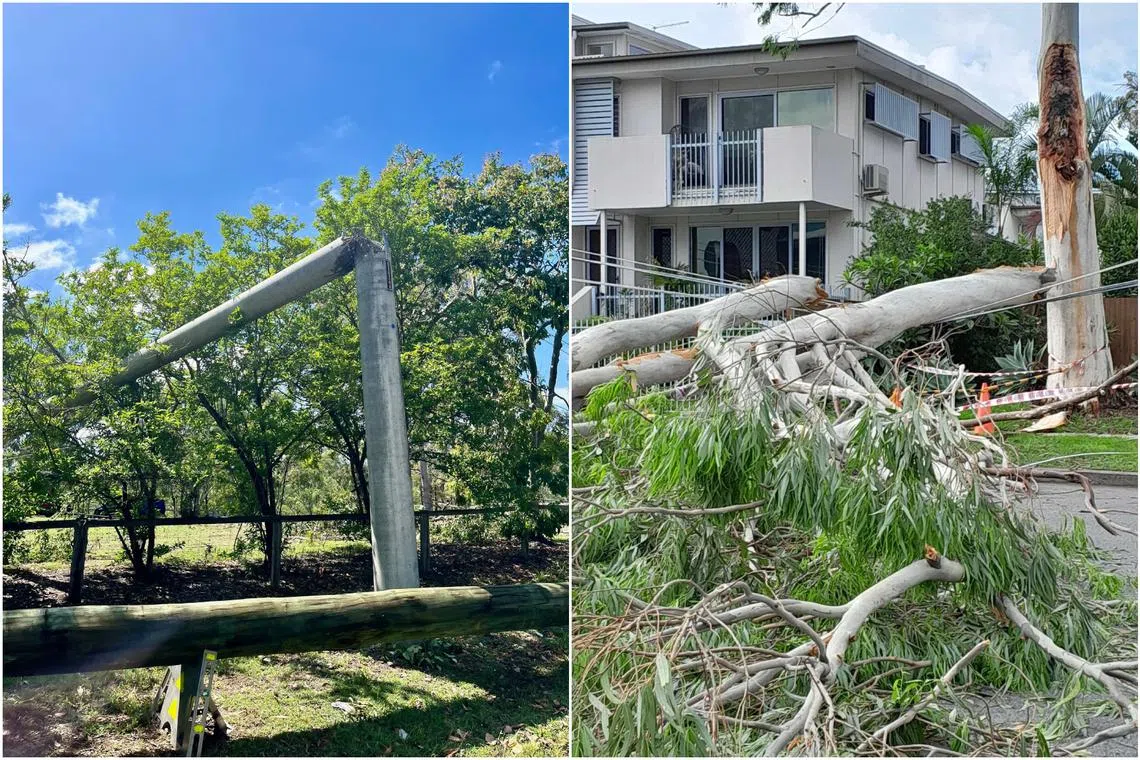10 dead after severe thunderstorms batter Australia’s east coast
Sign up now: Get insights on Asia's fast-moving developments

High winds snapped a concrete power post, brought down trees and blew off roofs in some of the worst-affected areas.
PHOTOS: ENERGEX/FACEBOOK
Follow topic:
SYDNEY - Ten people were killed in Australia after severe thunderstorms battered the country’s east over the Christmas holidays, the authorities said on Dec 27, with tens of thousands of properties still without power
Wild weather lashed the states of Victoria, New South Wales and Queensland on Dec 25 and 26, bringing large hailstones and torrential rain.
More than 90,000 households remain without power.
Three men were killed after a yacht with 11 on board capsized near Green Island in Moreton Bay during the storms, Queensland Police Service Commissioner Katarina Carroll told reporters.
Two women were found dead near the town of Gympie, about 180km north of the state capital of Brisbane, after they were swept away in flooded storm-water drains, police said. A nine-year-old girl was also found dead after going missing in a storm-water drain in Brisbane’s south.
The authorities warned that fast-rising rivers and streams could burst banks, inundating camping sites, which usually become crowded during the Christmas and New Year weeks.
A man was found dead on a campground in Victoria after flash flooding, police said. He was believed to have been camping there with a woman who was found dead on Dec 26.
Two people were also killed by falling trees.
The storms took down a concrete power line, which was “pretty significant and unprecedented”, Queensland Premier Steven Miles said during a media briefing.
The storms came after Tropical Cyclone Jasper
Mr Miles said the damage from Cyclone Jasper and the latest thunderstorms could be in “the billions”.
Australia’s Bureau of Meteorology had forecast further rain, though the wild weather was expected to ease later on Dec 27.
“Thankfully, today, we are not expecting to see quite as widespread thunderstorm activity, but there is still a risk of severe thunderstorms right across the east coast,” forecaster Jonathan How told ABC Television.
“When you start to piece together the experiences of this summer so far, it is clear that we are living through an era of escalating climate consequences,” said Dr Simon Bradshaw, research director of independent non-profit Climate Council.
As Australia battles rain in the east, several regions in the west were fighting fires. A volunteer firefighter was killed while responding to a bush fire, the media reported.
Australia’s December to February summer is under the influence of the El Nino phenomenon, which can cause weather extremes ranging from wildfires to cyclones to prolonged droughts. REUTERS

